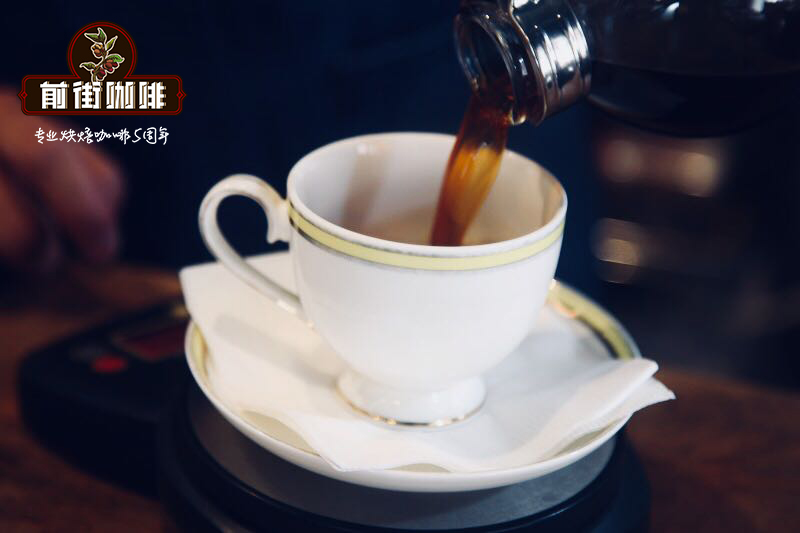Rwanda Ash Mountain treatment Plant Information introduction _ which brand of Rwanda washed red bourbon coffee tastes good?

Professional coffee knowledge exchange more coffee bean information please follow the coffee workshop (Wechat official account cafe_style)
The fine washing of the Huishan treatment plant is an example of the taste of the native land of Rwanda.
The Ash Mountain Water washing Plant in Rwanda is a private water washing plant founded by David Rubanzangabo. His insistence on quality has led to a corresponding sharp rise in the price of coffee, benefiting farmers. There are 26 cherry collection sites in the Grey Mountain area, and trucks regularly patrol these locations every day to collect freshly harvested cherries from farmers. After going to the washing plant, they go through a strict screening process to ensure that the processed fruits are ripe and well selected.
The Grey Mountain Community (Huye Mountain community) is located in the southern province of Huye in Rwanda and further south is close to the Burundian border. The whole alpine community has extremely fertile soil, rich in minerals, and can grow coffee with complex flavors. The only problem is a shortage of water. By 2013, local coffee farmers would have to collect water from a source two kilometers away. Thanks to the efforts and funding of David Rubanzangabo, the Ministry of Trade of Rwanda, and the boutique Tree Pier City Cafe (Stumptown) in the United States, the infrastructure for irrigation diversion has been completed and the water supply can finally be supplied directly to the Grey Mountain Water washing Plant and the Grey Mountain Community. After that, the quality of coffee improved by leaps and bounds.
David Rubanzangabo himself is a famous agronomist. He and his partner Tim Schilling started the Grey Mountain Project in 2007 to collect cherries from about 500 farmers in the mountainous areas of the southern Grey Province, including Huye, Maraba, Mbazi, Kigoma, etc., and then sell raw beans under the Grey Mountain brand. David pays great attention to detail, participates in every different process, and even makes its own peeling machine. After peeling and pulping, ferment for 12 hours, wash with water and let stand for 15 hours. There is a pre-drying process before the drying stage, which is carried out in the shade, while bad beans are screened again to reduce the effect of defective flavor of potatoes, a common disadvantage of Rwandan coffee, which is often due to moisture during the drying stage. The secret of David is to dry slowly at first, to keep the structure of shell beans solid, and in the final stage to bask in the sun in the elevated shed to enhance the flavor of coffee. His sister Rachel is responsible for sample roasting and cup testing to ensure the flavor and quality of the coffee.
With such persistence, it is no wonder that Grey Mountain won the runner-up of Rwanda Coffee Cup in 2012!
When sipped at high temperature, this Rwandan coffee gives off a strong ginger aroma; at about 70 degrees, it is full of sweet fruits such as green apples and red currants; put it for another 3 to 5 minutes, and it is full of honey flavor! We have been on the shelves several times, but the baking of Gardelli is the most amazing!
END
Important Notice :
前街咖啡 FrontStreet Coffee has moved to new addredd:
FrontStreet Coffee Address: 315,Donghua East Road,GuangZhou
Tel:020 38364473
- Prev

Story of kopakama processing Plant in Rwanda-introduction to the characteristics of Rwanda washed bourbon Coffee
Professional coffee knowledge exchange more coffee bean information please follow the coffee workshop (Wechat official account cafe_style) Rwanda Coffee producing area: there are about 33000 hectares of coffee plantations in Rwanda and 500000 people are engaged in coffee farming. With good natural conditions of high altitude and fertile volcanic soil, the country's fertile soil and suitable climate are conducive to plant growth, and coffee trees are like
- Next

What coffee producing areas are there in Tanzania to promote Moshi production?
Professional Coffee knowledge Exchange more information on coffee beans Please follow the coffee workshop (official Wechat account cafe_style) Coffee was introduced into Tanzania from Ethiopia in the early 16th century, but it was not until the end of the 19th century that it was promoted by German missionaries. There are 11 coffee producing areas in Tanzania, and when it comes to Tanzanian coffee beans, it must be the most famous Kilimanjaro coffee.
Related
- Detailed explanation of Jadeite planting Land in Panamanian Jadeite Manor introduction to the grading system of Jadeite competitive bidding, Red bid, Green bid and Rose Summer
- Story of Coffee planting in Brenka region of Costa Rica Stonehenge Manor anaerobic heavy honey treatment of flavor mouth
- What's on the barrel of Blue Mountain Coffee beans?
- Can American coffee also pull flowers? How to use hot American style to pull out a good-looking pattern?
- Can you make a cold extract with coffee beans? What is the right proportion for cold-extracted coffee formula?
- Indonesian PWN Gold Mandrine Coffee Origin Features Flavor How to Chong? Mandolin coffee is American.
- A brief introduction to the flavor characteristics of Brazilian yellow bourbon coffee beans
- What is the effect of different water quality on the flavor of cold-extracted coffee? What kind of water is best for brewing coffee?
- Why do you think of Rose Summer whenever you mention Panamanian coffee?
- Introduction to the characteristics of authentic blue mountain coffee bean producing areas? What is the CIB Coffee Authority in Jamaica?

